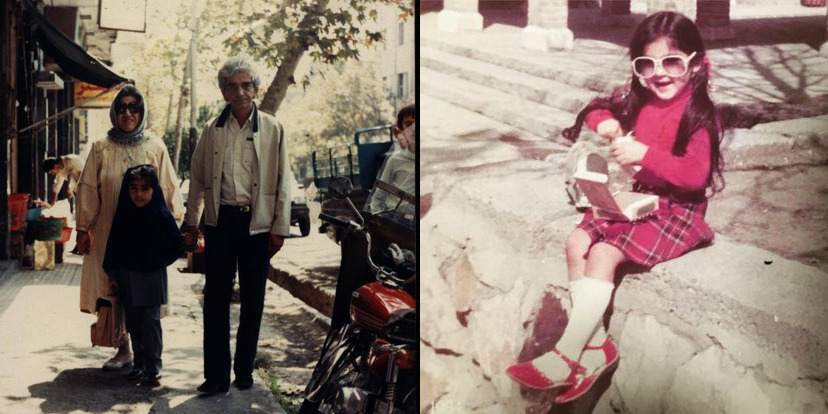Friday, November 4, 2022
The boy was shot by them.
The boy lay down in the middle of the street. All alone.
The boy watched the sky of the street he had grown up in for the last time.
The boy died alone in the middle of the street.
The boy, with his white sneakers, was put behind a truck by them.
The boy’s corpse was hidden under Shayan Store’s poster by them.
The boy was no more a boy from that neighborhood.
The boy was dead.
* The boy was later identified as Mehdi Hazrati, seventeen years old, from the city of Sarab, killed in Karaj by the regime’s security forces on the fortieth-day protests in memory of another killed protestor, Hadis Najafi.
September 26, 2022

In this picture, I am not even seven years old. I am six years and eleven months, and I am going to first grade. I am forced to wear the fucking maghnaeh (this particular form of head covering). My hair was long, and my mother braided it, so it didn’t get knotted under my maghnaeh. I didn’t know how to keep the covering properly on my head. Constantly pulling it back and forth caused knots in my hair that were hard to untangle. Six months later, my mother was heartbroken when I shed tears while she tried to brush my hair, and had it cut. I loved my hair. I thought it was beautiful. The lower parts were curly, and I loved those curls. When the curls dropped down on the floor of the hair salon, I wanted to cry. Mom said, “At least now you won’t be bothered under your maghnaeh.” The tips of my hair never became curly again.
In the second picture, I am five years old, before they forced me to wear that maghnaeh. I was a little girl who wore what she liked, but after I started elementary school on the first day of Mehr 1363 (September 24, 1984), things were never the same. Until I emigrated, my clothes were never what I wanted to wear, they were what I were forced to wear.
PS: My grandmother was once arrested by the so-called “morality police” for wearing the very manteau, tights, and shoes, you see in the picture, because she was not wearing pants or thick tights. She was arrested in front of her grandkids. My grandmother made fun of compulsory hijab until the day she died. In my mother’s words, she wore made-up manteaus. She would go out without thick tights, wearing sneakers. But she was all by herself. It is so good that today we are all together.
© Aida Ahadiany. Translation © November 2022 by Poupeh Missaghi. All rights reserved.











